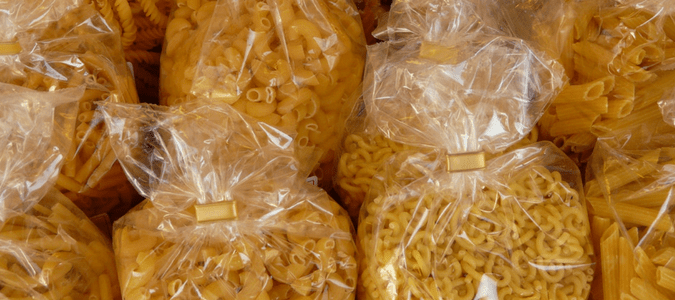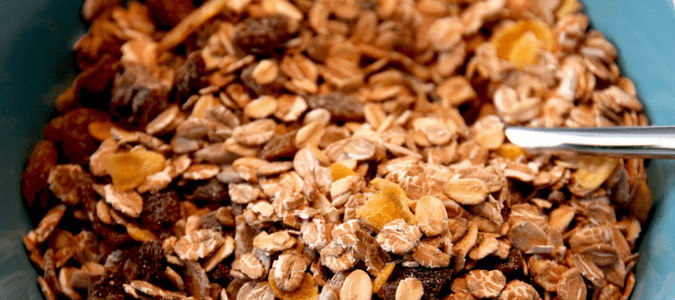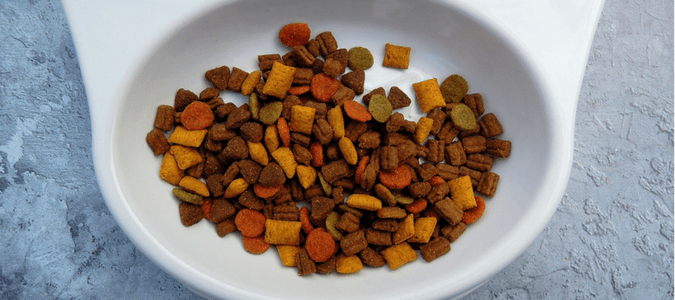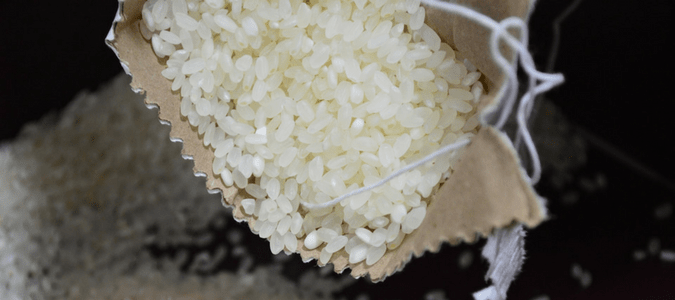
Have you ever heard of grain mites? You aren’t alone. This tiny pest can have a significant impact on the food we store inside our pantries. Grain mites, or flour mites, as they are also called, are typically pale whitish-gray pests. They are small, the biggest measuring just a quarter of an inch, but they can cause significant damage when they infest pet food, horse feed, cereals, rice, dried vegetables, cheese, corn, cornmeal, and dried fruit. A female grain mite can lay up to 800 eggs so that these pests can spread rapidly throughout the infested food source.
Although this pest predominantly affects bulk grain storage, grain mites can be found in your home. So, what should you do if you see signs of grain mites in your home and kitchen? Is it bad if you unknowingly eat them, and how do you get them out of your house? Keep reading to learn more about this tiny pest.

Grain Mites in House
Grain mites can be found in your food and in areas where food is kept, such as your pantry, kitchen, and even your child’s bedroom if they sneak dry cereal for a snack and then forget it or hide it under the bed or in their closet.
Since these creatures are so small, the first sign you’ll know they are in your home is typically the dust-like residue they leave behind, which you might mistake for moving lint. Food infested with grain mites may also give off a minty smell. If you detect an odd smell as you munch on your cereal, bread, or crackers, you might want to break out the magnifying glass to inspect it a little closer. As you might expect, you may have difficulty identifying which kind of mite has infested your home. Homeowners often can’t distinguish between a mold mite, a cheese mite, or another type of minuscule pest.
Cheese mites feed on cheese, as their name suggests. You may be surprised to learn that these insects are used to give some cheeses, such as Milbenkäse from Germany and Mimolette from France, a distinct flavor.
Like cheese and flour mites, mold mites feed on a fungus that can grow inside your home. If your home has persistent damp conditions, mold mites might be your problem. Getting rid of the mold will help get rid of these mites.
Remember that grain mites, like other mites, prefer hot, humid conditions. One distinction between grain mites and different types of mites is that they like dry food, like flour and cereal. Therefore, if you notice an unusual build-up of dust-like material in your pantry or in that type of food, it is most likely a grain mite.
Grain Mites in the Kitchen
Since most of your food is stored in the kitchen and, more specifically, your pantry, this part of your home is most likely affected by grain mites. These pests may enter your home on your body if you come into contact with infected products from the store. Mites are wingless and smooth, so they don’t travel long distances or move about the planet like other pests, such as ants. Since these insects multiply so rapidly, an infestation of your food can happen rather quickly.
You have a much better chance of bringing in mites on your foodstuffs than when you enter your home. However, some mites may change into a stage called the hypopus. In this stage, their body hardens, and they develop suckers that allow them to attach to insects or other animals and “move” with them.
The good news is that mites tend to be picky eaters and stick with those dry goods like cereal and flour and won’t impact other food items in your pantry, like canned goods. Therefore, you will want to look closer if you see telltale “dust” around these food containers in your pantry. Your kids may not have spilled cereal or flour in your pantry; you could be dealing with lots of grain mites.
When too many mites feed in one area, they will move in search of food. You’ll want to check all of your food for the mites, in case they have migrated elsewhere. This movement from one place to the other causes the “dust” you may see on your pantry shelves or other places where they feed.

What Happens if You Eat Flour Mites?
No one wants to admit it, but chances are high that most people had swallowed a gnat or other bug during their lifetime, whether running, biking, riding in a convertible, or on a motorcycle when it happened. If your mouth is open, a bug can get in. You probably are alive to tell the tale, so the impact is likely negligible, except for the “eww” factor.
Although these pests are nasty to think about, flour mites are generally harmless to people. Like swallowing a gnat or other insect in small quantities, ingesting a grain mite won’t hurt you. However, some people are allergic to mites and can develop inflammation.
Even if you aren’t allergic, if you find out that mites have infested your food, you still don’t want to eat it. If mites get into enough of your food, disposing of infested food, purchasing replacements, and cleaning out your pantry can be frustrating and time-consuming.
Some people are reluctant to throw out entire bags of food. If you were to make a loaf of bread using infested flour, you might detect a muddy taste in it. The mites themselves wouldn’t survive the oven, but your food still won’t taste quite the same.
If you find mites in your pet or horse food, don’t feed them to your animal. Mite-infested animal feed can cause allergic reactions, diarrhea, and inflammation of the intestines. Feeding your animals food with mites in it can impair their growth and cause them to eat less. Since our animals can’t tell us what’s wrong, we’ll only know if they get sick or reject the food altogether.

How to Get Rid of Grain Mites
Discovering that tiny creatures are in your food or pantry can be alarming. If you determine that you indeed have grain mites, there are several things a homeowner can do to get rid of them. Consider taking the following ten steps to make your home mite-free:
- Discard any infested food. For example, throw out the entire bag if you find mites in your pet’s food. If your cereal box has turned into a mite buffet, discard the whole thing in your outdoor trash.
- If grain mites are in your pantry, inspect each package or product closely and throw out infested items as needed. You may want to use a magnifying glass to identify which containers have become infested.
- Temporarily move your uninfested food to another location.
- Clean your pantry with hot water, soap, or a weak bleach solution. Remember to use warm or hot water because it kills the mites on contact, and rinse out the rag you use so you don’t unknowingly move mites around your kitchen.
- Vacuum your pantry shelves, cracks, and crevices because these pests can hide in these areas too. Make sure to dispose of the contents of your vacuum outside your home since mites can reproduce quickly. If you have a canister vacuum, empty it into a sealable plastic bag and add talcum powder.
- Put all of your food back into the pantry.
- Repeat this same process throughout your kitchen in areas where grains are stored. Wipe all your surfaces with hot, soapy water, then vacuum.
- Consider putting your food in canisters with screwable or sealable lids to prevent future infestations. To prevent a future mite infestation, focus on your cereals, flours, and other dry goods.
- Keep your pantry well-lit and dry by reducing humidity to less than 55 to 60 percent since grain mites like dark, humid places. Avoid purchasing food in damaged packaging to reduce your risk of bringing these pests home.
- Regularly clean out your pantry and throw out old or expired food.
If the mites were found in another area of your home, thoroughly inspect and clean that area. Remember, if you find the tell-tale “dust,” they’re most likely on the move to another location.
Grain mites typically have a one-month life cycle, so even if you’ve missed any tiny bugs, they should die off once you deprive them of their food source. That said, grain mites can also enter a “resting” cycle. If you complete all the above steps and still have a problem, you may consider calling a professional to remove the grain mites from your home.
Once you’ve handled a mite infestation, prevention will be vital to keeping these creepy crawlies at bay. Remember to keep food in sealed containers and keep your humidity levels low to prevent these pests from invading your pantry and feasting on your flour.
ABC Can Handle Your Household Pests
ABC has been helping homeowners identify and manage pests for years. Our pest pros know about every type of insect which might find its way into your home and, most importantly, how to get them out for good. With ABC’s help, you can learn what signs to look for if you suspect you have an infestation and ways to make your home less hospitable for pests that thrive in our part of the country.
